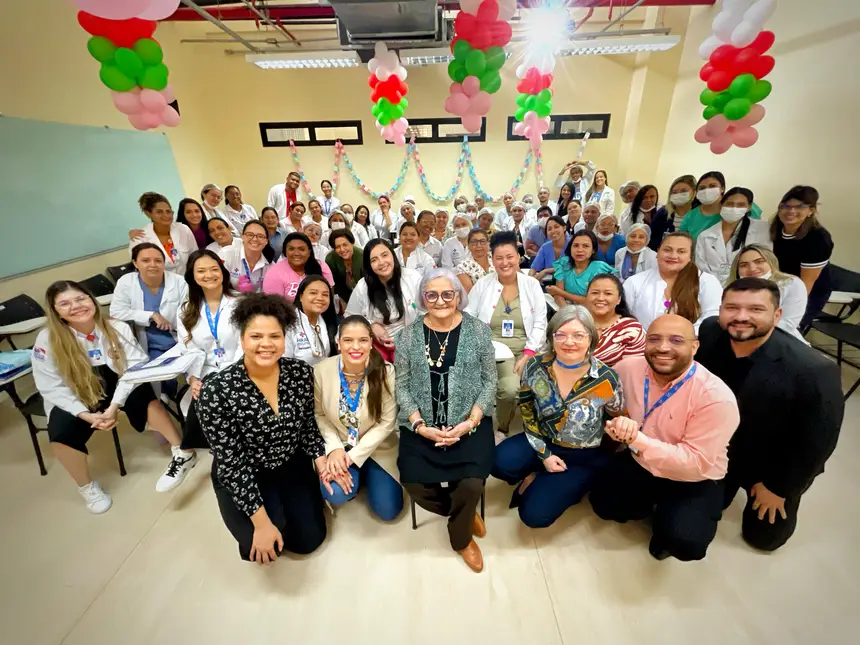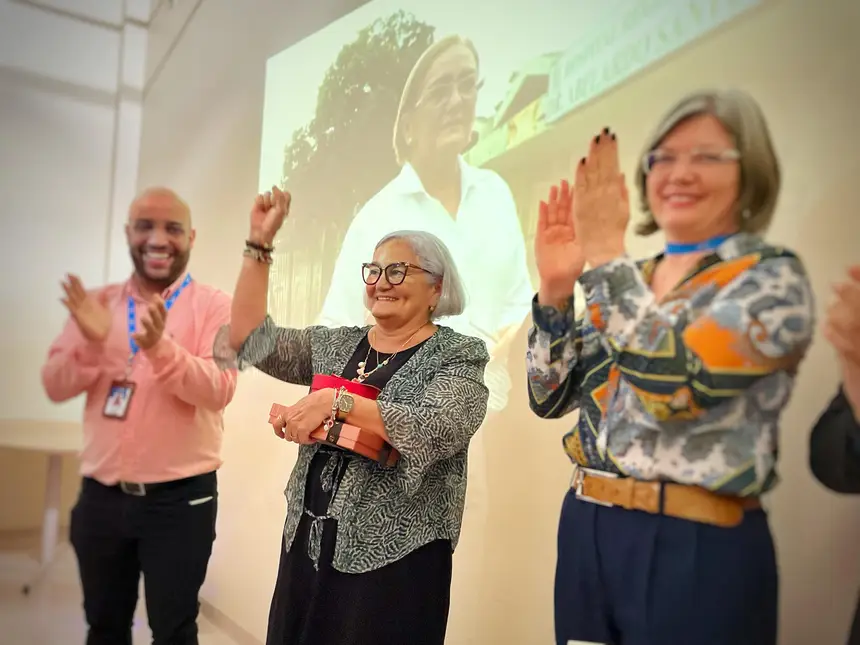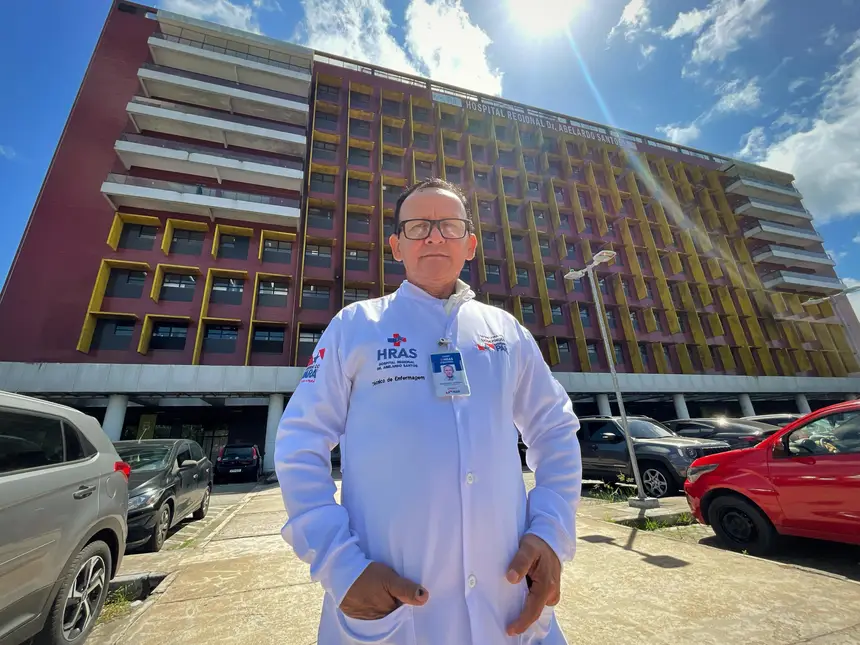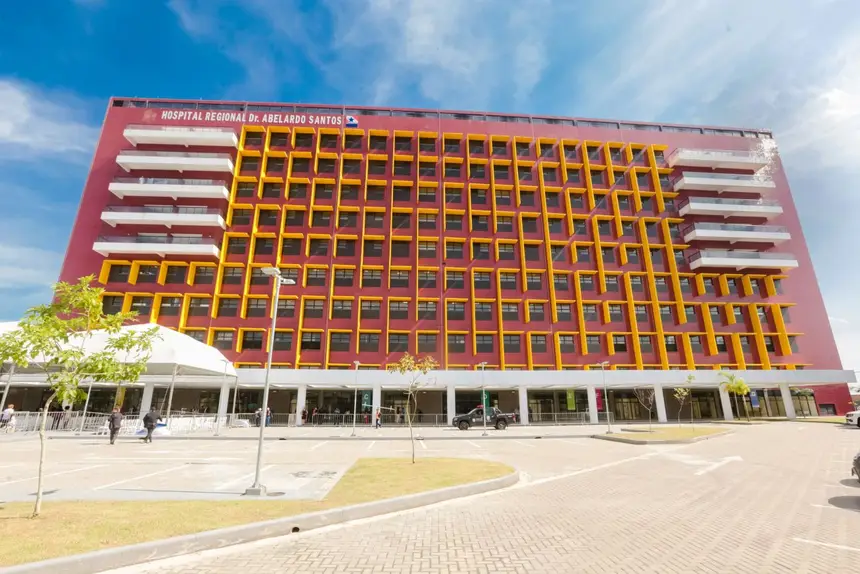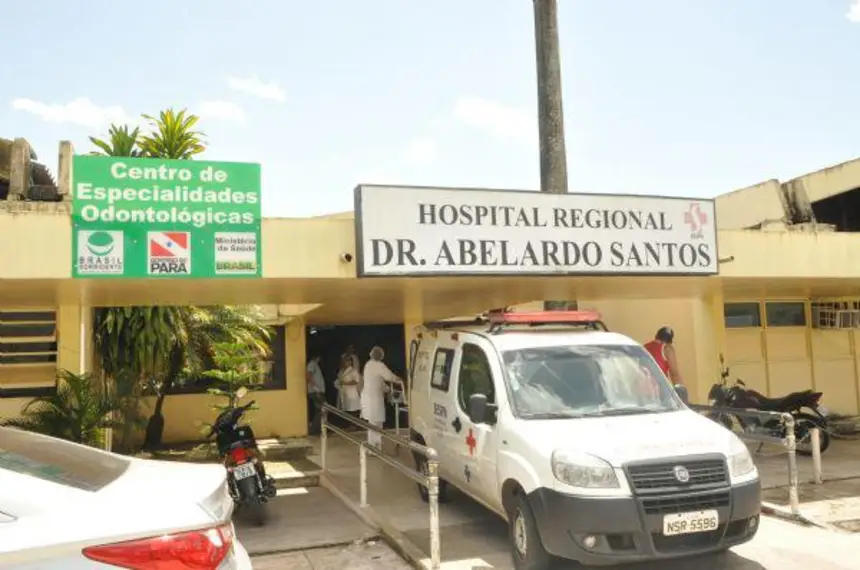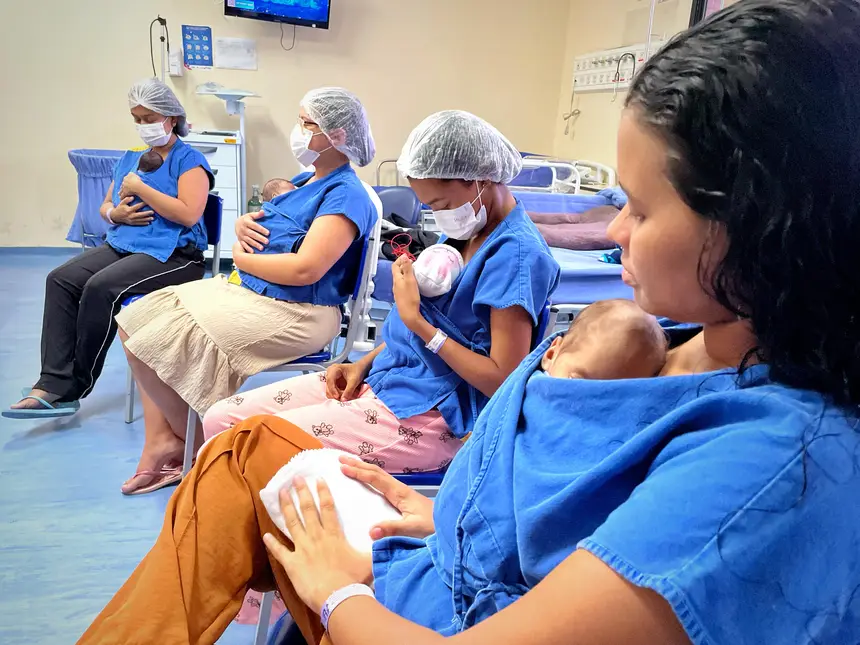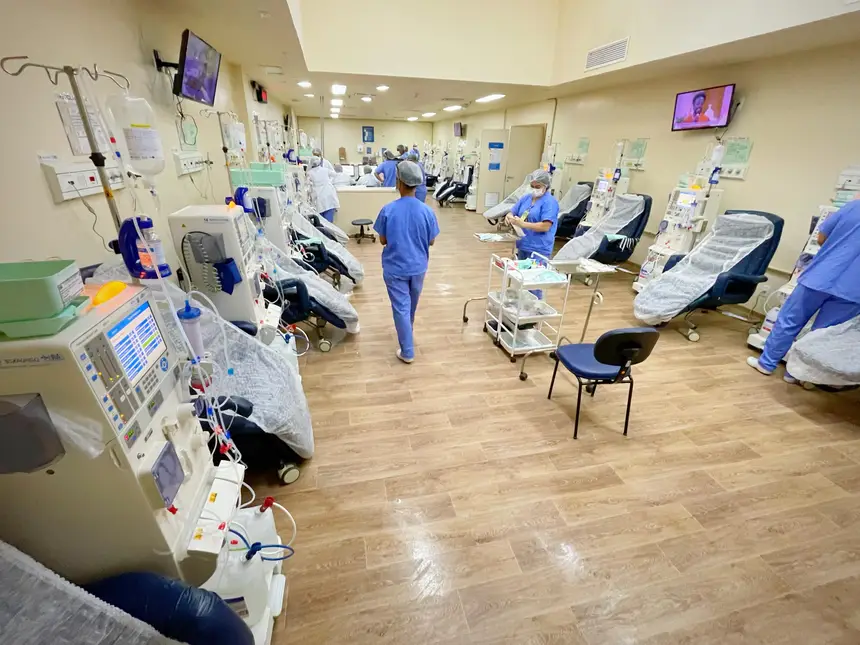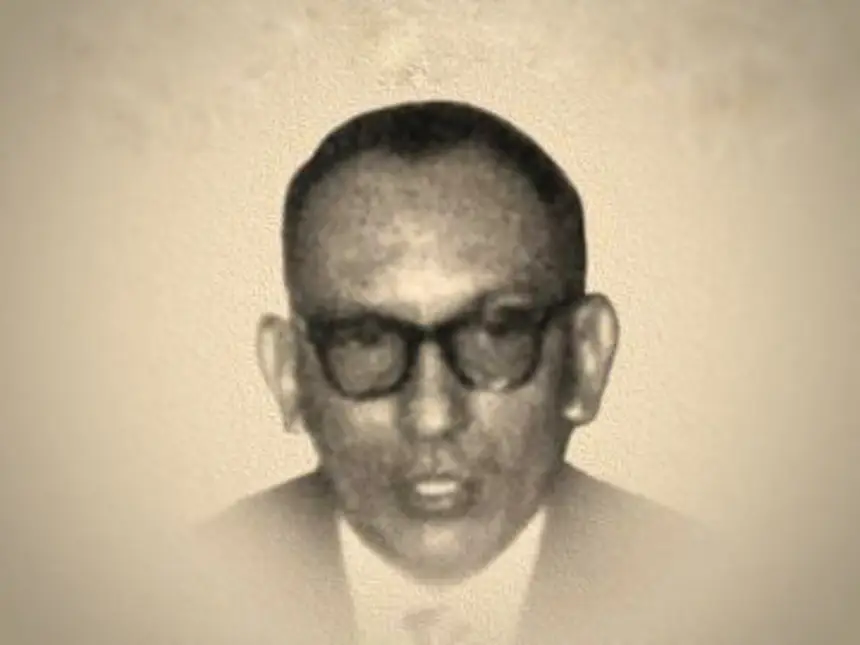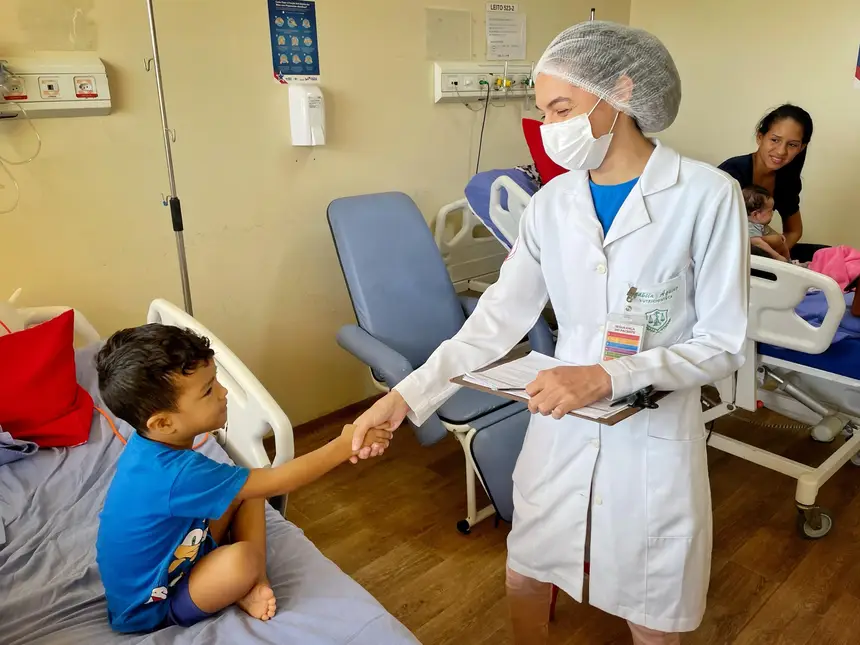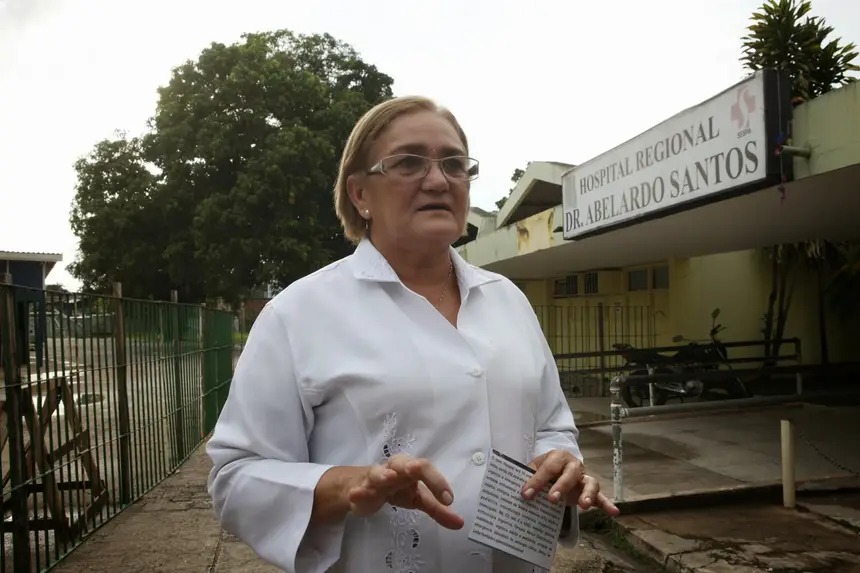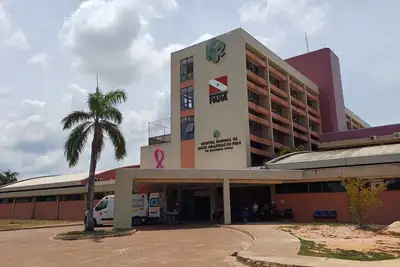State strengthens health network with the modernization of Abelardo Santos Hospital
In Icoaraci, the Hospital has 9 floors spread over 40 thousand square meters of area, making it the largest hospital unit in Pará
The Regional Hospital Abelardo Santos (HRAS), located at the entrance of the Icoaraci district in Belém, has established itself as a symbol of public health in Northern Brazil since its reconstruction. With nine floors spread over more than 40 thousand square meters of area, it is considered the largest hospital unit in Pará, and has a model of care for medium and high complexity.
The current structure was delivered to the population in November 2019 by Governor Helder Barbalho, as part of a broad investment program in the state health network. Since then, Abelardo Santos Hospital has expanded its care capacity. In 2024, it surpassed the mark of 1 million services provided to thousands of people from Belém and other regions of Pará.
“HRAS is an example of our commitment to the integral health of the population, where each advancement reflects care and attention to the real needs of each person. The restructuring of the unit shows how investment in public health is, above all, an investment in lives, dignity, and the future of an entire region,” emphasizes the head of the State Department of Public Health (Sespa), Ivete Vaz.
History
Before becoming what it is today, HRAS already existed and was affectionately known as “Abelardinho,” due to its smaller structure at the time, very different from the current one. Founded in 1992, the hospital was considered a historical work, as it marked the transformation of a simple Basic Health Unit (UBS) into a medical-hospital institution with 24-hour service.
Raimundo Almeida, 58 years old, recalls how he started his journey at HRAS, where he was an intern in 1995 and stayed until 2004. “It was my first job, my first contact with health and patients. Everything was new, and the team was united to provide the best care. But we realized we needed to grow, as we were becoming too small for the size of the population,” he said.
Years later, Raimundo returned to the hospital after the delivery of the new building. “I confess that when I arrived, I was shocked by the size and technological advancements of the new ‘Abelardo’. At the time I entered, none of this existed. It was a huge change, like night and day. In the end, those who benefit are the people of Pará who come in fragile and leave satisfied and healed,” he concluded.
Paula Batista and Willian Araújo praised the facilities and services provided by HRAS. “It is essential that everyone knows the unit to understand the work done here. The modern structure caught our attention, with well-equipped and cozy delivery rooms. This gives us even more security in choosing the place for our baby's birth,” highlighted the nursing technician.
What has changed?
33 years ago, when the embryo of the current Abelardo Santos Hospital was built, the unit had an area of 5,170 square meters and operated on a single ground floor. With the restructuring, after 28 years, the hospital has grown significantly: its built area increased by 451.23%, reaching 28.4 thousand square meters, with nine floors, an annex building, and a large parking lot.
Another relevant change was the increase in the number of beds, which went from 50 to 360, a growth of 620%. The staff also saw a leap (+952.63%), going from an average of 190 to about 2,000 professionals. The capacity for care kept pace with this advancement: previously, the hospital performed about 1,000 services per day; now, it is approximately 3,000.
“We found that the population had increased significantly and that the services the hospital offered at the time could no longer meet the real demands. So, the goal was to bring concrete improvements to health and expand care to benefit the population of Icoaraci and other regions of the state - and this was achieved,” declared Vera Cecim, former director of HRAS from 2011 to 2014.
The unit's care manager, Adriano Furtado, emphasizes that the expansion also brought other treatment alternatives: “For spontaneous and referred demands, the unit currently offers 11 specialties: vascular, urology, thoracic, gynecological and pediatric surgeries, mastology, endoscopy, general and spine neurosurgery, general medicine, and obstetrics, which was previously more limited,” he stated.
Now known by users as the “Giant,” HRAS is managed by the Social Institute Mais Saúde (ISMS), in partnership with the State Department of Public Health (Sespa). The unit is a reference for emergency and urgent care for women - obstetrics and gynecology - and also for children, with services that operate on an open-door basis, providing care 24 hours a day.
According to technical director Marcel Jofran, another benefit was the expansion of outpatient, diagnostic, and therapeutic services: “We are the second largest maternity hospital in Pará, with over 5,000 births per year. There are five delivery rooms and 50 obstetric hospitalization beds. For pain relief during labor, HRAS uses non-pharmacological methods with physiotherapists during delivery,” he explained.
The structure also includes a bathtub for performing warm water births. It is the only public health unit in Pará that has a pool for hydrotherapy treatment. For mothers from the interior of the state who accompany their children's treatment, the place offers a welcoming space for accommodation. Finally, one of the pillars of action is humanization aimed at users.
Tribute
Considering the importance and legacy of the professionals who worked in the old structure of Abelardo Santos Hospital, the current management of the unit paid tribute to nurse and professor Vera Cecim, the last general director of the unit before the restructuring process began in 2013. The tribute was held during Nursing Week, at the hospital itself.
A passage from the dedication contained the following message: “Your journey in the old HRAS was marked by significant transformations, leadership, and an innovative spirit. Throughout your management, you demonstrated commitment to excellence, combining sensitivity, technical competence, and professional ethics. You led this institution with a focus on patient care and valuing health professionals.”
For Vera Cecim, returning to Abelardo Santos is a nostalgic experience: “I am happy for the recognition, for being here and seeing what this hospital has become. This structure was an old dream of the residents of Icoaraci, and starting in 2011, we began to redesign this dream with the State Government. Today it is a reality. I am very proud to see this instrument in favor of the people,” she concluded.
The moment was attended by managers and a large part of the nursing team at the hospital. “If we are here today, doing a job and providing safe and quality care, it is thanks to the hundreds of people who, back then, prepared the ground for us to bring the best of health to the people of Pará,” highlighted the current general director of HRAS, Ednise Amaral.
Origin of the name
The hospital is named after the pediatrician from Pará, Dr. Abelardo Santos, one of the first professionals to contribute significantly to the development of pediatrics in Pará. At a time marked by a shortage of doctors and difficulties in transportation to the interior regions, Dr. Abelardo stood out for his commitment to child health.
In the 1950s, the pediatrician was responsible for organizing the foundations of pediatric education in Pará. He became a professor of the subject at the Faculty of Medicine of the Federal University of Pará (UFPA) and presided over the Brazilian Society of Pediatrics (SBP) in 1959. In recognition of his journey, Dr. Abelardo Santos was honored as the patron of Chair 21 of the Brazilian Academy of Pediatrics.


